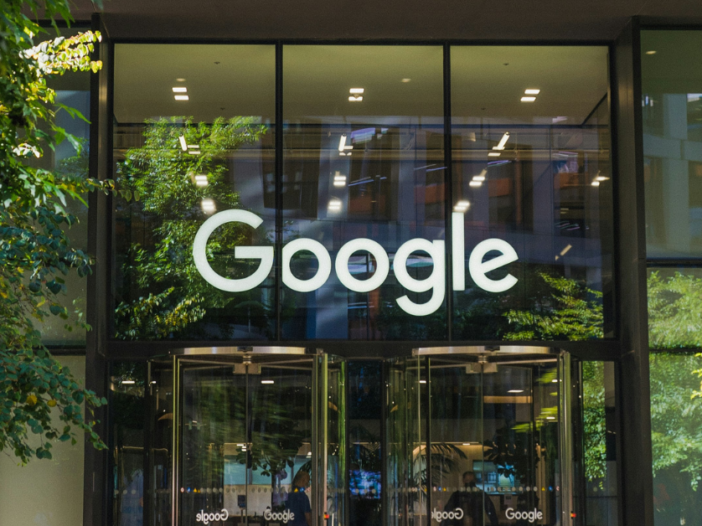30 Ways to Grow Your SEO Skills for Free (or Close to It) JumpFly PPC Advertising News
source
Sami Kurvinen: How Google killed our business (for now!) – NEXT.io
Summits
Elite Retreats
Podcasts
Other Projects
About
By NEXT.io – 10 May, 2024
He shares his insights with NEXT.io and what possibly can be done to bounce back. Sami also explains how these recent changes affect affiliates’ ongoing relationships with iGaming operators.
Imagine waking up one day and seeing your store burned down to the ground or realising that it has suddenly disappeared from the earth’s surface overnight and is no longer to be found where it once used to stand.
Anyone’s business affected by the recent global Covid-19 pandemic can also relate to this feeling.
This is also the new reality for business owners like myself and my business partners, who have been hit by the ongoing Google core updates as our websites are no longer to be found on Google’s search engine.
This is a disastrous blow to any business that relies on Google’s search engine, which has a 90% market share in the European search market.
We, as business owners, can cry about it, be angry, feel desperate, and feel that Google and the world are unfair. However, in the end, we are left with two choices:
· Option A: Give up.
· Option B: Do something about it.
Google has two main objectives:
· Earn money through its paid ad search service.
· Provide the world with the best search engine.
In Google’s quest to improve its search engine, Google continuously releases major updates to its algorithms, with the final goal of giving users better search results.
During these ongoing updates, starting in October 2023 and again in March 2024, Google has turned up the heat even more than usual.
With the introduction of AI, the internet has been flooded with content of various qualities, and Google needs to act before it’s too late. The target of these recent updates has been to clean up and remove low-quality content from its search service together with websites that offer players unhelpful content and focus more on sales than helping visitors.
There is even more to it, but you get an idea. The aim is to improve search, but what if your sites are affected and you disagree with being a spammy or low-quality site?
You want to succeed and create a successful business that helps players and offers them value, but you end up feeling like a failure. What’s even more frustrating is that it’s outside your control.
OR is it?
You may think and truly believe that you are bringing something new and valuable to the industry and players through great content, but if Google doesn’t agree, then you are screwed.
Years of hard work and time invested are gone, but is it your own fault? Did Google kill our business, or did we bring this to ourselves?
The thing is that in reality, our businesses aren’t technically dead but (hopefully) temporarily put in an unwanted section, like professional football players who are sent to the stands to watch the game from the sidelines instead of participating in the game.
· Is this fair? – No
· Can you complain to Google? – No
· Can you do something about it? – Maybe
If you really believe that your site is relevant and brings unique and helpful content to players, then you need to act and do something about this.
· Analyse your site.
· Compare what leading competitors do on their websites and how you can do it better.
· How can you improve things?
· What needs to be improved?
· Listen to SEO podcasts and learn from SEO experts by reading their opinions.
· Read everything that Google shares and try to understand their viewpoint.
· If possible, discuss with SEO companies that can give you some insights and help you.
· Most importantly, understand why your site has been placed in the unwanted bracket and figure out what you can improve to change this.
Will our websites be relevant one day and bring value to players and casino operators? We believe and hope so, but how do you know?
In the end, you need to decide if what you do brings unique value to visitors, and if this requirement can’t be met, it’s time to do something else.
Some operators aim to cut costs and stop legacy revenue share deals that no longer bring new value but only cost money.
This is done by adding new clauses to the affiliate agreements where the marketing partners are forced to meet certain requirements by bringing x number of First Depositing Customers (FTDs) per month or quarter.
However, if your entire business is put in quarantine, it will be nearly impossible to meet those requirements for some time.
There should be a discussion about some changes needed in this new environment where many websites are affected by these recent Google algorithm updates and instead look at affiliates on a case-by-case basis.
Small (or currently non-existent) affiliates can still grow and become partners of significant size one day. Decisions made in difficult times like this will affect who these affiliates will cooperate with in the future.
People often ask me if they should focus on the iGaming affiliate niche. My advice is that if you don’t have anything new or real value to bring to the table, then look at something else to do as this is brutal and extremely difficult in 2024.
Similar posts
Follow us
Linkedin
Youtube
Twitter
Instagram
Facebook
Spotify
Telegram
Share this post
Share the link via
Facebook
Telegram
WhatsApp
X.com
LinkedIn
Or copy the link
A content-driven events, media and publishing company that delivers news and insight to investors and iGaming professionals.
What we do
About us
Beyong the Algorithm – Decoding the Macrotrends that are Shaping the Future of SEO – Kantar
Explore the many areas where Kantar will help your organisation to succeed, through a deeper understanding of people.
Find growth, inspiration and a deeper understanding of people, within your industry or sector.
Read our latest articles, reports and insights from the UK and Ireland.
A year of splintered viewing habits, soaring costs, technological innovations, tightened data privacy and increased sustainability efforts
Head of Digital Content, Kantar Analytics, UKI
Since its emergence, the purpose of SEO has seemed straightforward: ensure your website ranks well on search engines, and your traffic will follow. The higher you rank, the better your visibility, and the lower the cost of acquisition. To achieve this, it’s been a must for the industry to keep up with Google’s evolving algorithm and updates to its search results pages.
But with advancements in AI automation, search marketing has entered a new era. One where the lines between sponsored and organic results are blurred, and the rules are far more complex.
With Google and the search industry in constant flux from changes that affect how brands advertise on and how users interact with search platforms, new strategies are needed. We tapped into the industry’s hive mind to understand what brands need to do to keep up with, and ideally ahead of this evolution.
We identified key industry opinion leaders and analysed over 16,000 of their mentions on social channels, journals and publications from the past two years to determine the macrotrends impacting the future of SEO. Along with our findings, we suggested actions for marketers to navigate these future SEO trends, organising them across the six different lenses of the STEEPe framework – Social, Technological, Economic, Environmental, Political, and Ethical.
The social perspective of search is manifested in the evolution of user behaviour, digital trends, and cultural shifts. It concerns just under 10% of the analysed mentions.
With the rapid expansion of platforms such as TikTok and ChatGPT, and the rise of social shopping on Instagram and Pinterest, Google is seeing its dominance challenged. As a result, it has begun to evolve the traditional search journey, with future SEO trends likely to be more experiential.
The search path for users is no longer linear: search with text, scroll down until you find a suitable answer, and click to follow the link to a website. Now, users can be more specific in their searches and ask their questions with images, voice, and even screenshots. Google is in turn trying to make those experiences frictionless; providing results in a variety of formats and allowing users to obtain their answers directly from the search results page itself with the marriage of AI and SEO.
This diversification of search results formats means it is not enough for brands to have well-written and well-optimised landing pages endorsed by experts to obtain visibility. Instead, there is a need for a variety of multimedia assets to be present in a wider digital ecosystem.
Neil Patel articulated this aspect of our analysis in this quote, “as habits evolve, so must content, intent mapping and, ultimately, the measurement of SEO impact in order to further grow”.
Roughly, two thirds of the conversation about search marketing concerns the future of AI and machine learning. The World Economic Forum projected that “AI will create 97 million new roles by 2025 in areas like content creation, AI development/testing, and AI maintenance”.
Within the search industry, the perspectives on the opportunities of AI automation range: academics Ziakis and Vlacholopoulou are quite positive about the future and AI, believing that “AI-powered SEO heralds a new era of precision and that AI in SEO paves the way for more targeted SEO campaigns that attract more organic visits to business websites”. At the other end of the spectrum, opinion leaders like Travis Tallent, VP of BrainLabs, question whether AI automation will render SEO obsolete.
Through our analysis, we found that the uses and benefits of AI, especially for content creation, are vast. Generative AI offers the opportunity to produce content at a high volume.
But, despite these undeniable benefits, there is a potential disadvantage to SEO writing with AI: that you risk it becoming commoditised and inauthentic.
AI-generated content may sound good and meet the standards, but does it actually reach users in a meaningful way? Does it have the same authenticity that a human-generated piece of content has?
For years, Google has been challenging the SEO industry on these very aspects of content quality – demanding that content adds value to users rather than be produced just to meet the search engine’s own standards.
The challenge for SEO professionals is clear: while AI can help with scale, the north star for brands should always be the user. The future of SEO demands that content be designed to resonate with users, and not just to rank well or meet the search standard.
The economic aspect of search contributes to around 15% of the mentions by key experts. The conversation is focused on the economic strain on small businesses, demonstrating ROI, and keeping costs low while adapting to change. This may lead to a paradigm shift where brands reconsider the value of SEO.
Gartner predicted that “by 2028, brands will see their organic site traffic decrease by 50% or more as consumers embrace GenAI-powered search”. With Google launching Search Generative Experience (SGE), the time for zero clicks search is here and the likelihood of this happening is no longer far-fetched. These kinds of changes pose ROI pressures for brands and businesses, and an immediate call to rethink how they’re measuring SEO value.
Yet, even as AI automation continues to rise, Google’s business model is still concerned with the visibility of brands. Trying to stay present in this evolving landscape is a battle, especially when the effort needed to stay relevant puts pressure on resources and quality. Search Engine Land reported that Google has begun to blur the line between sponsored and organic results, indicating that this would require advertisers to adjust their strategies and potentially rethink investing in long-term SEO.
As we posed earlier, brands may see AI automation as the answer to creating content that grants visibility, but there is still an underlying caution about the risks. The search industry must reconsider their role in marketing, observing that their objective is to craft positive associations of the brand and, in doing so, predispose consumers to buy them.
Content must first fully capture the heart of your brand, ensuring that the experience it delivers is meaningful, different and salient. This is ultimately what Google is still focused on, as noted in their latest core update.
So, the answer to cost visibility may lie in brand power. Brands are valuable assets and search professionals must support building them rather than putting them at risk with repetitive and formulaic website content.
The environmental aspect of the SEO landscape isn’t a major conversation – contributing only 1% of the comments. We found some early inclination towards green hosting, such as conscious browsers and search engines, which may emphasise the need for environmentally responsible AI, the promotion of eco-friendly practices across the industry, and the reduction of our digital carbon footprint. However, this is not a major concern for search professionals or brands.
The political perspective only contributed to around 2% of the conversation with a focus on transparency from Google, and the growing risk of misinformation online.
With regards to transparency, there are calls for Google to be more open about their algorithm and practices. While this would help search marketers understand how to rank well, complete transparency from search engines may challenge their innovation.
In that same vein, there is some commentary on misinformation and how Google needs to contribute to the fight against it. In July 2024, Google announced an algorithm update designed to combat deep-fakes, allowing swifter content removal processes, and demoting offending sites. Yet, there’s a concern that more must be done – especially as AI and SEO continue to be linked. AI Overviews may serve users with instantaneous replies, but there’s a call for those replies to be properly validated to prevent the spread of misinformation.
Ultimately, the issues with misinformation, regulation, and innovation return to the conversation about content quality. For brands, there is a social responsibility to be informative and accurate in the content they create, and this practice should encourage them to think of content quality and optimisation beyond the standards of search engines.
The final theme of our STEEPe framework is focused on Ethics and drives 6% of the analysed mentions. Here, industry leaders reach consensus on ethical SEO and content authenticity. The themes that arose from these conversations were focused on how brands should maintain user trust.
In a Moz blog post, Chima Mmeje highlighted that low-quality content can erode trust, leading users to seek out brands who produce content that is more reliable and has more authoritative information. For brands and SEO professionals, this means focusing on connecting the brand services or products with users via meaningful content which is relevant to their intent.
Balancing trust, as much as the cost of visibility, is a challenge that the search industry should address by focusing on the user and the seamless experiences that Google is striving to deliver. It suggests that optimisation should go beyond search gold standards and brand power and seek to address misinformation while being mindful and empathetic towards the emotions and time which users invest in consuming branded content.
Search marketing, as we know it, is undergoing a transformation shaped by many considerations: the shifting culture of user behaviour, the future of AI and SEO, increased economic pressures, new ethical considerations, and strict political regulations.
In this ever-evolving landscape, marketers must prioritise creating seamless user experiences, with empathy, across all channels, rather than solely focusing on achieving high rankings in search engine results. The value of SEO has never been more critical, or more complex.
SEO Consultant Reveals Search Engine Optimization Consulting Secrets – Martechcube
SEO consultant Eric Schwartzman has released an exclusive podcast interview with a well-known SEO consultant who runs a New York-based SEO consultancy about what the recent Google leaks mean for SEO consultants and their clients. In this special episode of the Earned Media Podcast, these SEO consultants share their revelations about search engine optimization best practices.
This podcast episode was released just days after one of the SEO consultants wrote the groundbreaking blog post announcing the leak. The post created a buzz in the SEO consulting community with revelations from leaked internal Google documents.
The SEO consulting findings shared in this podcast are already changing how SEO consultants approach SEO strategy, offering a competitive edge in understanding and navigating Google’s complex ranking systems.
SEO Consultant Uncovers Google Algorithm Secrets
In this episode, the SEO consultant discusses Google’s ranking systems and the factors influencing search results. Drawing from his extensive research and analysis, he reveals the hidden mechanisms behind Google’s algorithm, providing valuable insights for SEO professionals. These insights include a detailed examination of how different ranking factors interact and influence each other, suggesting a clearer picture of how Google determines the order of search results.
SEO Consultancy Exposes Google’s Deceptive Practices
Discover how Google appears to have misled the SEO community about key ranking factors. He explains the real role of domain authority, click data, and more, challenging the conventional wisdom within SEO consultancy, and provides evidence from the leaked documents that show discrepancies between Google’s public statements and their actual practices, revealing the need for SEO consultants to test, critically evaluate and adapt their strategies.
SEO Experts on the Impact of AI on Search
SEO experts need to stay ahead in the evolving search landscape. He delves into how AI is reshaping search and the implications for SEO strategies. Learn about Google’s Search Generative Experience (SGE) and other AI-driven changes that are redefining SEO. He highlights specific AI technologies and how they are integrated into Google’s search algorithms, emphasizing the need for SEO consultants to understand and leverage these advancements.
Actionable SEO Consultant Insights
The SEO consultant provides practical advice for SEO consultancies on optimizing for the new realities of search. He emphasizes the importance of authoritative content, user engagement, and adapting to AI advancements. He also shares specific tactics for creating content that not only ranks well but also engages users, increasing the likelihood of achieving higher conversion rates and sustained traffic growth.
SEO Consultant Discusses the Truth About Click Data
Contrary to Google’s public statements, click data plays a significant role in rankings. The SEO consultant explains how this impacts your SEO efforts and why understanding this hidden factor is crucial for SEO consultants. He provides detailed examples of how click data influences search rankings and offers strategies for leveraging this knowledge to improve SEO performance.
SEO Consultant Emphasizes Authoritative Voice in Content
Creating high-quality, authoritative content is more crucial than ever in the age of AI. This experienced SEO consultant shares insights on why an authoritative voice in content creation is key to success in the current SEO landscape. He discusses techniques for establishing authority and trustworthiness in your content, which can lead to better rankings and more engaged audiences.
SEO Consultant Offers Actionable Strategies
The SEO consultant offers practical tips on optimizing your site for AI-driven search engines. Stay ahead of the competition by implementing these actionable strategies shared by a leading SEO professional. These strategies include advanced keyword research techniques, on-page optimization tactics, and link-building methods tailored to the evolving SEO landscape.
SEO Consultant Highlights Fragmentation of Search
The increasing diversity of search platforms necessitates optimizing for more than just Google. The SEO consultant discusses the fragmentation of search and why a multi-platform strategy is essential for SEO consultants. He explains how to effectively optimize for different search engines and platforms, ensuring a broader reach and more comprehensive SEO strategy.
SEO Consultant on AI and Verification
The role of AI in search and the need for users to verify information through trusted sources like Google is crucial. The SEO consultant provides insights into how AI impacts search verification processes. He explores the ethical considerations and best practices for ensuring that AI-generated content remains accurate and reliable.
SEO Consultant Analyzes Google’s Core Updates
Recent updates are addressing AI content and the ongoing battle against spam. The SEO consultant analyzes these core updates and what they mean for SEO consultants. He breaks down the specific changes in Google’s algorithms and offers guidance on adapting SEO strategies to stay compliant and competitive.
SEO Consultant’s Best Practices for Language Models
Ranking in AI-driven search environments requires new strategies. Based on his latest research, the New York-based SEO consultant shares best practices for optimizing language models. He also provides detailed advice on creating content that aligns with the preferences of AI-driven search engines, ensuring better visibility and higher rankings.
For more such updates, follow us on Google News Martech News
Subscribe to our Newsletter
Copyright © 2024 Martech Cube. All Rights Reserved. Privacy Policy
Discovering AFFTER: Innovation and Exclusivity in Affiliate Marketing – Affiverse
Constantine Ivanchuk, SEO Affiliates Team Lead at AFFTER joins Lee-Ann to discuss the unique approach of AFFTER as an invite-only affiliate program in the iGaming space. This episode focuses on the issue of quality over quantity, and providing bespoke commissions and account management to a select group of premium affiliates. Constantine also highlights the changing landscape of SEO over the last five years, and emphasises the importance of building relationships with affiliates, along with the need to diversify traffic sources in the affiliate marketing industry.
Listen in here for all of the insights….
Lee-Ann asks Constantine, “What sort of technological advancements is your platform working on in relation to AI right now? Because, if you’re going to be giving that high-touch experience, what are some of the things that affiliates can expect when they work with AFFTER?”
Constantine explains, “Well, when we’re talking about the AI, the field where the AI can really help us and improve the experience is basically the process of financial clearing. Firstly we focused our AI improvements on the chatbot for the affiliates and some internal processes inside our team to optimise the approach to the affiliate, the way of solving issues so there wouldn’t be any bottlenecks or stumbling stones, and the things that can be managed by AI that would not occupy the time of the person – of the affiliate manager.”
AFFTER’s technology has been built, elevated and developed to meet the needs of multiple different partners that work in the platform. Lee-Ann asks, “So you, yourself, specialise in SEO affiliation, which has also been the backbone of our industry for quite some time. But at our recent Amplify Summit, which was held a couple of weeks ago, we discussed that the rules of engagement are changing and customers are using the internet and all the social channels now to search for offers, too. So, it’s not just about Google anymore. I want to get down to the nitty gritty with you about how you think SEO has changed over the last five years, because I know that this is an area that you specialise in?”
Constantine says, “I would say that the so-called sphere of the SEO affiliates is shrinking year-by-year. I would say, of course, the reason is the Google updates, the more precise countermeasures of some regulatory bodies, and so on. But it’s also becoming the question of more quality versus quantity about the SEO affiliates. Because, yes, we started getting fewer and fewer players from SEO sources, but the quality has not become poor. So you can feel safe that SEO will still be your reliable source of high LTV players.”
[04:43] Creating a high-touch experience
[12:15] Finding new sources of traffic
[23:02] Affiliate Networks vs Direct Affiliates
HURRY! GET YOUR EARLY BIRD TICKET BEFORE MAY 31!
Early Bird registration for the ELEVATE Summit is now open, with a Full Two Day Conference pass priced at £149 – when purchased before the 31st May. Thereafter the tickets will increase to £249 per person for this two-day exclusive event!
Tickets to this two-day conference at Park Plaza Westminster Bridge, include:
Don’t miss your chance to be a part of this groundbreaking ELEVATE summit and take your performance and lead generation marketing efforts to new heights.
Secure your ticket and learn with industry veterans what’s new and trending in the Affiliate and Lead Generation worlds – today by clicking here.
Rate, Review & Subscribe on Apple Podcasts
“I love Affiverse’s Affiliate Marketing Podcast.” <– If that sounds like you, please give us a 5 Star rating here! Taking the time to do that, helps us support more people in our community to access digital and affiliate marketing insights, expert lead learnings and allows us to share the latest online marketing tactics that help Affiliate programs and businesses to grow.
Click here, scroll to the bottom, tap to rate with five stars, and select “Write a Review.”
Also, if you haven’t done so already, subscribe to our weekly newsletter and never miss out on FREE insights and training.
Subscribe to our podcast HERE!
In this episode of the Affiliate Marketing Podcast, Lee-Ann is joined by Simon Delaney, CEO at Databowl. They discuss
In this conversation, Lee-Ann and Leandro Schlottchauer, CEO of Kuyen Labs/Fuul discuss the transformative potential of blockchain technology in
In this episode of the Affiliate Marketing Podcast, Lee-Ann is joined by Simon Delaney, CEO at Databowl. They discuss
In this conversation, Lee-Ann and Leandro Schlottchauer, CEO of Kuyen Labs/Fuul discuss the transformative potential of blockchain technology in
Join 1000’s of digital marketers who want to keep up to date with Affiliate Marketing trends across all verticals. Sign up to our weekly Newsletter and stay updated with all our industry news, insights and interviews.
Bringing you all the latest affiliate marketing insights, digital trends and expert interviews in one simple place. Launch, scale or grow your affiliate program with our award winning agency team, or access expert lead affiliate program manager training. Affiliate Marketing, simplified.
Copyright © All Rights Reserved. Affiverse Limited T/A Affiverse | Registered No. 11074279
Revolutionizing SEO: Top Trends Driven by AI in 2025 – Analytics Insight
Harshini Chakka





